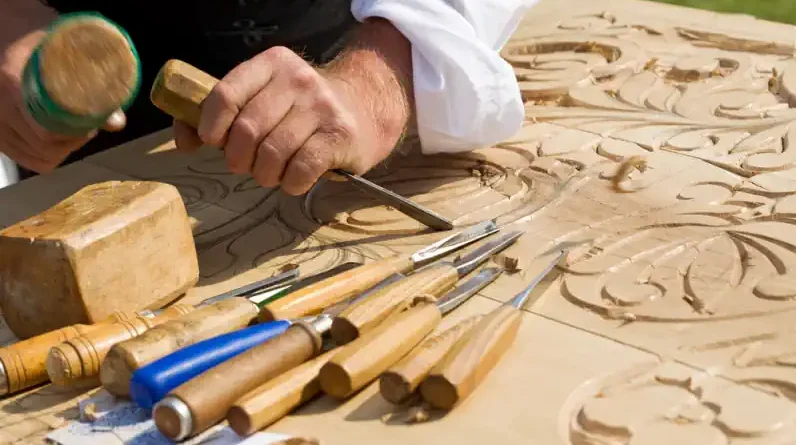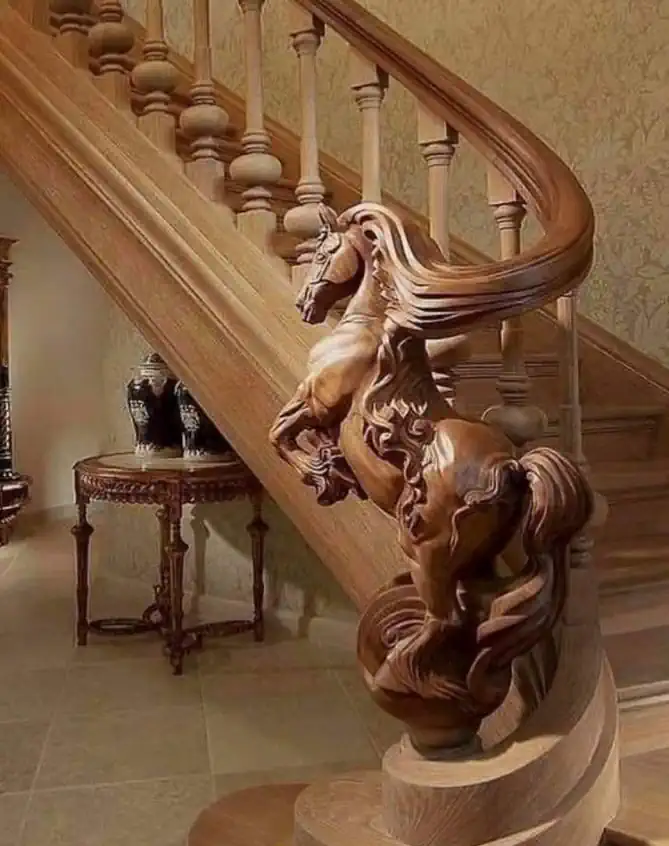
What Is Wood Carving And What Are The Benefits Of Learning It?
Wood carving is a centuries-old art form that uses tools to create intricate carvings out of wood. It requires imagination, patience and plenty of practice to master the fine details of the craft.
Learning wood carving enables creativity and self-expression, while providing a unique form of stress-relief, as it allows one to disconnect from the external environment while they are creating something with their hands. Wood carving also provides an opportunity to acquire knowledge about different types of wood and the tools used to manipulate them, as well as can help improve motor skills for those who participate in it on a more serious level.
Recently, the ancient craft has enjoyed a resurgence in popularity due to its therapeutic nature, so joining in can be a rewarding exploration into another world.
The Basic Tools You’ll Need To Get Started With Wood Carving
Carvers use various tools such as knives, chisels, gouges, V-tools and dental draggers to remove wood from the surface of a block in order to create stunning details. For any novice wood carver, there are certain necessities when starting out with this craft. To be successful, you’ll need to invest in a set of quality carving tools such as gouges, V-tools and chisels.
You’ll also benefit from wearing gloves for additional grip as you carve and to protect your fingers from the sharp blades. And safety googles or glasses are a must have to protect your eyes.
Along with these tools, having a bench hook or clamp independently to secure the wood block is essential. Other recommended items include sandpaper and wood carving knives for additional detail work. With these basic pieces of equipment, you should be ready to start your wood carving journey and create beautiful wooden works of art!
Choosing The Right Type Of Wood For Your Project
You should take your time to ensure you select the right type of wood for your project so that you can get the best results. Softwoods such as pine or basswood are good choices for a beginner, allowing for easy cutting and shaping. Hardwoods, such as walnut or maple, provide a higher level of detail and more stability, but require more skill to work with.
Before buying any kind of wood, it is important to look at the grain pattern, density, color and texture properties of the wood sample you are considering. By learning how all these characteristics will affect your carving project up front, you won’t be disappointed later on.

The Different Techniques Used In Wood Carving
Wood carving is an exceptional form of art that requires many specialized techniques in order to create beautiful designs and sculptures. It has been practiced for centuries, with ancient cultures from a variety of countries experimenting with different techniques and styles. Today, wood carving remains popular due to its versatility and ability to be adapted to suit both modern tastes and traditional methods.
Depending on the desired outcome, carvers may utilize chip carving, relief carving, whittling and other patterns to create deep textures, intricate shapes or simply smooth curves. Even chainsaws have been used to create contemporary sculptures.
By understanding the various techniques and their applications, you will be able to make an informed decision as to which method would work best for your project. Whatever the technique used, the skill of adding depth and detail can turn plain wood into stunning works of art.
Tips For Improving Your Wood Carving Skills
Wood carving is a rewarding craft that requires patience and practice in order to master. With the right tools, techniques and knowledge, you can create beautiful works of art that will last for generations. To help further develop your wood carving skills, here are some helpful tips:
- Take classes or workshops to learn from experienced carvers. This is especially useful if you are just starting out with wood carving as it will help you to understand the fundamentals before diving into more advanced projects.
- Experiment with different types of woods as each one has its own unique properties which may affect the outcome of your project.
- Invest in quality tools as this will make working with wood much easier and safer.
- Make sure to always wear protective gear such as gloves and eye protection when using sharp tools or working with power tools.
- Don’t be afraid to make mistakes – this is how we learn and grow in our craft. With each mistake comes a new lesson which you can use for future projects.
- Start small and work your way up to more complicated designs as it will help build confidence in your skills.
- Take time between projects to review what worked well and what didn’t so that you can apply these lessons the next time around.
By following these tips, you will be able to hone your wood carving skills over time and create stunning works of art!
Conclusion
Wood carving is an engaging creative outlet that allows you to create beautiful and unique works of art. With the right tools, techniques and tips, anyone can become an expert wood carver with enough practice. By taking classes or workshops, investing in quality tools, experimenting with different types of woods and following safety precautions, you will be able to hone your skills over time. Finally, don’t forget to take your time when making projects as there are no shortcuts in wood carving – patience and attention to detail will pay off in the end! With these tips in mind, you’re sure to get started on a successful wood carving journey!

